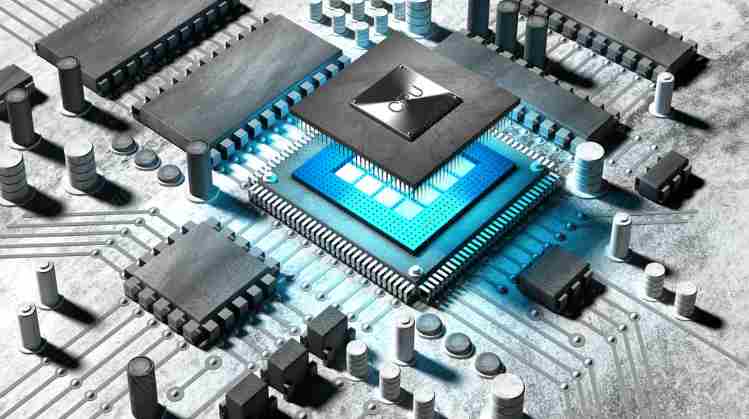
As a kind of products that can effectively hinder AC, impedance circuit board has been constantly questioned in the market. From parameters to manufacturers, people who do not understand the specific application scenarios of products, and people who know directly study the cost performance ratio.
As a kind of products that can effectively hinder AC, impedance circuit board has been constantly questioned in the market. From parameters to manufacturers, people who do not understand the specific application scenarios of products, and people who know directly study the cost performance ratio. More and more people want to know where there is a good quality impedance circuit board, so what specific problems can the impedance circuit board help customers solve?
Impedance circuit boards can help solve these problems
First, solve the problem that the circuit board is not durable
Circuit board is a configuration that has been used for a long time. It works day and night in every energized period from the beginning of installation. Long-term use makes the circuit board must be in a safe and stable state to ensure no mistakes.
Second, to address people's psychological concerns
The reason for the invention of impedance circuit board this device, the essence of its significance is to make the running circuit board can be controlled in a certain state through the physical principle, to ensure the safety of operation, followed by controllability, and then is to be able to adjust the relevant parameters of the circuit board of different products, in order to produce enough product parts suitable for the operation of products.
Three, solve the different structure requirements of different circuit boards
Products produced in different fields have different structures, this difference results in the characteristics of the parts needed, so manufacturers are always searching for matching their own products of the circuit board, as a device to resist the alternating current in the circuit board, impedance circuit board also has different models and different parameters changed with the change of the circuit board.
The use of impedance circuit board with reputation is solving many real problems for people, for the safety of very concerned manufacturers, choose a impedance circuit board manufacturers matching their own products for cooperation, can ensure the safety of products, and increase the trust of consumers on their own products. In addition, for the type of circuit board, impedance circuit board also has the corresponding parameters optional.
For a newly designed circuit board, debugging often encounter some difficulties, especially when the board is relatively large, more components, often do not know how to start. But if master a set of reasonable debugging method, debugging will get twice the result with half the effort.
For the new PCB board we just got back, we should first observe roughly whether there are any problems on the board, such as whether there are obvious cracks, short circuit, open circuit and other phenomena. If necessary, check that the resistance between the power supply and the ground wire is large enough.
Then it's time to install the components. Independent modules, if you are not sure to ensure that they work properly, it is better not to install all of them, but part of the installation (for relatively small circuits, you can install all at once), so that it is easy to determine the scope of the fault, so that when you encounter problems, there is no way to start.
Generally speaking, you can install the power supply part first, and then power on to test whether the output voltage of the power supply is normal. If you're not too sure when powering on (and even if you are, it's recommended that you add a fuse, just in case), consider using an adjustable regulated power supply with current limiting. Firstly, the over-current protection current is preset, and then the voltage value of the regulated power supply is gradually increased, and the input current, input voltage and output voltage are monitored. If there are no current protection problems in the process of upward adjustment, and the output voltage also reaches normal, it indicates that the power supply is OK. Otherwise, disconnect the power supply, find the fault point, and repeat the above steps until the power supply is normal.

Then gradually install other modules. After each module is installed, power it on to test it. Power it on by following the above steps to avoid burning components due to overcurrent caused by design errors and/or installation errors.
There are generally several ways to find a fault:
① The method of measuring voltage.
The first thing to confirm is whether the voltage of the power supply pin of each chip is normal, then check whether various reference voltages are normal, and whether the working voltage of each point is normal. For example, when a typical silicon triode is switched on, the BE junction voltage is around 0.7V, while the CE junction voltage is around 0.3V or less. If a triode has a BE junction voltage greater than 0.7V(except for special triodes, such as the Darlington tube, etc.), it is possible that the BE junction is open.
② Signal injection method.
Add the signal source to the input terminal, and then measure the waveform of each point in turn to see if it is normal, so as to find the fault point. Sometimes we will also use a simpler way, such as holding a tweezer, to touch the input end at all levels to see whether the output end is responsive, which is often used in audio, video and other amplifier circuits (but note that the circuit of the hot plate or high voltage, can not use this method, otherwise it may lead to electric shock). If there is no reaction to touching the first level, but there is a reaction to touching the second level, it indicates that the problem is in the first level, should focus on inspection.
③ Of course, there are many other ways to find the fault point, such as looking, listening, smelling, touching and so on.
"Look" is to see whether the components have obvious mechanical damage, such as rupture, burning black, deformation, etc.; "Listen" is to listen to the working sound is normal, such as some things should not ring in the ring, the ring does not ring or sound is not normal; "Smell" is to check for a bad smell, such as burning smell, capacitor electrolyte smell, etc.
For an experienced electronic repairman, these smells are very sensitive; "Touch" is to use the hand to detect whether the temperature of the device is normal, such as too hot, or too cold. Some power devices, working up heat, if it is cool, you can basically judge that it does not work up. But it doesn't work if it's hot where it shouldn't be or if it's too hot where it should be.
General power transistor, voltage regulator chip, working below 70 degrees is completely no problem. What is 70 degrees like? If you push your hand up, it can last for more than three seconds, indicating that the temperature is about 70 degrees below (note to touch tentatively first, do not burn your hand).







